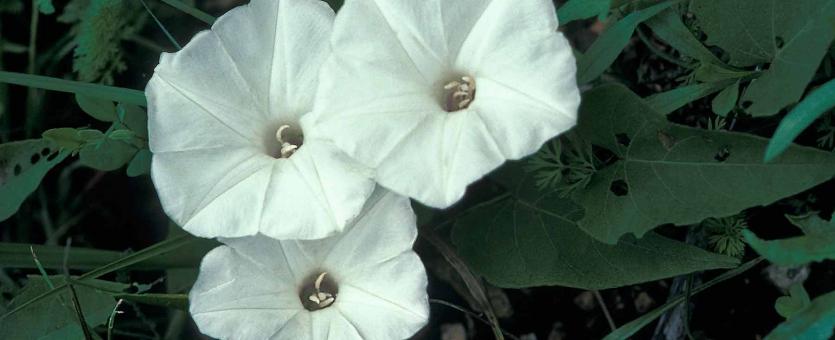
Wild potato vine is a perennial trailing or climbing vine. Flowers are 1–7 in terminal clusters, each flower on a long peduncle, funnel-shaped, to 3 inches long, white with a dark crimson or purple center. Blooms May–September. Leaves on long stems, heart-shaped, pointed, to 6 inches long. Root a tuber to 2 feet long and weighing 20 pounds or more, often branched, leglike.
Stems can grow to 16 feet in length.

Statewide.
Habitat and Conservation
Occurs on banks of rivers and streams, margins of lakes and ponds, ditches, roadsides and railroads, and other disturbed areas; also crop fields, fallow fields, and old fields. This plant is in the same genus as cultivated sweet potato (I. batatas), which, like most others in the genus, is a tropical plant. The genus also includes cultivated morning glory flowers as well as many serious agricultural weeds, such as bindweed.
Human Connections
The large, fleshy, vertical roots are difficult to excavate but are edible. Native Americans cooked and ate it as a starchy vegetable. The rootstock is also said to have mild purgative properties. As a garden plant, it can grow rapidly, smothering nearby plants, and often needs support.
Ecosystem Connections
Long-tongued insects — bees, butterflies, moths — visit the flowers. Several types of beetles and moth larvae eat the foliage; others feed on the rootstock. Caterpillars eating the leaves acquire the plants' toxicity as a predator deterrent. The tangled foliage creates a refuge for many animals.





























